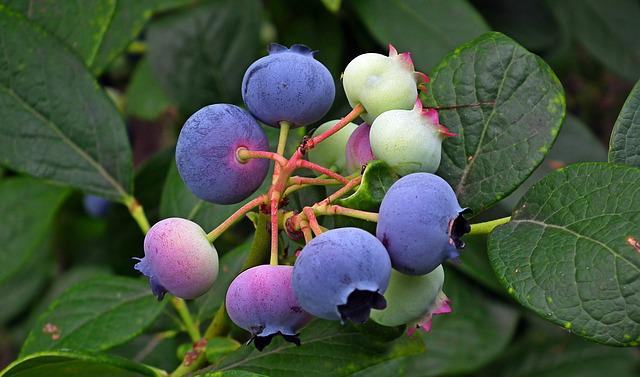Are Blueberries Easy To Grow? — Growing & Caring Tips For Blueberries In Your Garden

Blueberry bushes are relatively easy to grow and require little maintenance. The most important thing to remember about growing them is that they require acidic soil and, ideally, rainwater to thrive. Even if you don’t have acidic soil in your garden, blueberries grow exceptionally well in containers. Peat-free ericaceous compost can be used instead of peat if you don’t have acidic soil in your garden. A single plant of many blueberry varieties will indeed bear fruit, but the yields and sizes of the berries increase dramatically when multiple plants are present. For the best results, use rainwater to water blueberries, as it is for all acid-loving plants. Use a liquid feed for acid-loving plants every week during the growing season.
They’re ideal for small gardens because they grow to over a meter in height and remain relatively compact, making them ideal for small spaces. Plant at least two different kinds of blueberries close together for the best yield. The cropping season is thus extended. Some varieties bear fruit in July, while others do so in August.
Table of Contents
When to Plant Blueberry
Planting blueberry bushes can be done at any time of year, with the exception of when the ground is frozen solid.
How to Plant
Consider digging a hole slightly larger than the plant’s previous pot if you plan to plant it in the ground. If the plant is bare-root, plant it at the same depth as the soil tide mark or the pot’s depth. Pine needles or bark can be used as a mulch. Well-rotted manure should not be added because it will raise the soil’s pH level. Keep the plant well-watered until it is established.
Choosing a container with a diameter of at least 30cm (12in) and using ericaceous compost is essential if you’re planting a young plant. Plant at the same depth as before, whether in the ground or a pot. Keep the compost moist by pressing it down firmly and using rainwater to water it.
Care Tips
- Whenever possible, use rainwater to water blueberries rather than tap water.
- Soil can become more alkaline due to using tap water that contains lime.
- The yellowing of blueberry leaves due to chlorosis can be traced back to variations in soil acidity.
- A pine tree needle or bark chip spring mulch is a good way to maintain acidity in the soil during the growing season.
- Using a saucer or tray under your pots of blueberries will keep them from drying out.
- Give them an acid-loving plant liquid feed once a week.
- A larger pot of 45-50cm (18-20in) should be repotted in spring after a couple of years.
- Once a year, remove the top layer of the compost and replace it with fresh compost. As blueberries are known for their voracious appetites, it’s a good idea to repot them every few years in fresh compost.
Mistakes in Growing Blueberry
Planting Only One Blueberry Bush

Some cultivars of blueberries are self-pollinating, while others are not. Because of this, at least two different kinds of the same plant are required to fully pollinate one another for those that aren’t (like rabbiteye blueberries, a common berry in the southern US). The flowers will bloom, but the berries will not if only one of these plants grows.
Every year, having more than one bush of a different cultivar will produce more berries, even in partially self-pollinating cultivars (most commonly northern highbush and southern highbush).
So, no matter what cultivar you choose, you’ll need at least two bushes to get the best fruit production.
We should try to plant even more. Diversity is always a good thing. This is true for a number of reasons, not the least of which is that different cultivars will bloom and bear fruit at different times of the year. Because of this, it can be beneficial in many ways.
Select an Inappropriate Medium
To thrive, blueberry plants require soil with specific physical and chemical characteristics. As a result, the first error is to choose unsuitable soils or a poor selection of compacted substrates.
The medium in which plants grow is very important. Clay soils that can hold a lot of water should not be used for blueberry plants because they don’t like that. It isn’t good to put blueberry plants into soils with a high pH (unless it is corrected and it is possible to make it acidic) or soils with a lot of bicarbonates and an acid pH because these soils aren’t good for the plants.
Picking Inappropriate Variety for Planting Area
Variety selection must consider the local climate and geography of the intended planting site. As a result, the best way to avoid making a mistake in the variety selection is to conduct a thorough soil evaluation and identify the factors that cannot be controlled and will directly impact the crop’s development.
Soil pH (property), electrical conductivity (EC), and availability of cold hours are examples of factors that can affect the health of a plant (commune-region). This will be followed by a search for cultivars that are better suited to the new environment.
Fertilization Plan
This factor is extremely important in fruit size, flavor, kilos per plant, plant development, and other factors. Because the blueberry is extremely sensitive to electrical conductivity (EC) above 1 mS/cm, the fertilization concentrations will be kept to a bare minimum. Depending on the type of water used, the stage of development of the plant, and the climate, a specific formulation will be recommended for the proper development of the plant.
Pruning and Blunting
This factor will significantly impact the production dates, particularly in terms of the precocity and the number of kilos produced per plant. It is critical to complete the process correctly and appropriately in the plant’s life cycle.
Irrigation
To avoid root suffocation, it is critical to establish the frequency of watering and the number of liters per hour that the plant receives. Blueberry plants have delicate root systems, so excessive watering can cause the plant to suffer greatly and result in root loss.
Even though blueberries are known for their rapid growth, these changes have a detrimental effect on yield and profitability.
Dry Soil
When growing blueberries, it’s important to remember to water the roots regularly. Blueberries are susceptible to drying out because of their shallow root systems. In the spring and fall, use 2-4 inches (5-10 cm) of wood chips or pine needles to mulch around plants to keep the soil moist. Mulching with leaves or sawdust reduces the amount of water that reaches the plant’s roots.
